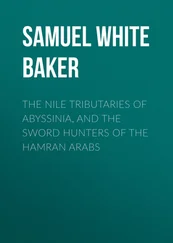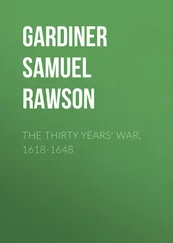Samuel White Baker - Eight Years' Wanderings in Ceylon
Здесь есть возможность читать онлайн «Samuel White Baker - Eight Years' Wanderings in Ceylon» — ознакомительный отрывок электронной книги совершенно бесплатно, а после прочтения отрывка купить полную версию. В некоторых случаях можно слушать аудио, скачать через торрент в формате fb2 и присутствует краткое содержание. Издательство: Иностранный паблик, Жанр: Путешествия и география, История, foreign_edu, foreign_antique, foreign_prose, на английском языке. Описание произведения, (предисловие) а так же отзывы посетителей доступны на портале библиотеки ЛибКат.
- Название:Eight Years' Wanderings in Ceylon
- Автор:
- Издательство:Иностранный паблик
- Жанр:
- Год:неизвестен
- ISBN:нет данных
- Рейтинг книги:4 / 5. Голосов: 1
-
Избранное:Добавить в избранное
- Отзывы:
-
Ваша оценка:
- 80
- 1
- 2
- 3
- 4
- 5
Eight Years' Wanderings in Ceylon: краткое содержание, описание и аннотация
Предлагаем к чтению аннотацию, описание, краткое содержание или предисловие (зависит от того, что написал сам автор книги «Eight Years' Wanderings in Ceylon»). Если вы не нашли необходимую информацию о книге — напишите в комментариях, мы постараемся отыскать её.
Eight Years' Wanderings in Ceylon — читать онлайн ознакомительный отрывок
Ниже представлен текст книги, разбитый по страницам. Система сохранения места последней прочитанной страницы, позволяет с удобством читать онлайн бесплатно книгу «Eight Years' Wanderings in Ceylon», без необходимости каждый раз заново искать на чём Вы остановились. Поставьте закладку, и сможете в любой момент перейти на страницу, на которой закончили чтение.
Интервал:
Закладка:
It is a dangerous thing for any man to sit down to "make" a book. If he has had personal experience, let him write a description of those subjects which he understands; but if he attempts to "make" a book, he must necessarily collect information from hearsay, when he will most probably gather some chaff with his grain.
Can any man, when describing the "fertility" of Ceylon, be aware that newly-cleared forest-land will only produce one crop of the miserable grain called korrakan? Can he understand why the greater portion of Ceylon is covered by dense thorny jungles? It is simply this—that the land is so desperately poor that it will only produce one crop, and thus an immense acreage is required for the support of a few inhabitants; thus, from ages past up to the present time, the natives have been continually felling fresh forest and deserting the last clearing, which has accordingly grown into a dense, thorny jungle, forming what are termed the "Chénars" of Ceylon.
So fully aware are the natives of the impossibility of getting more than one crop out of the land that they plant all that they require at the same time. Thus may be seen in a field of korrakan (a small grain), Indian corn, millet and pumpkins, all growing together, and harvested as they respectively become ripe.
The principal articles of native cultivation are rice, korrakan, Indian corn, betel, areca-nuts, pumpkins, onions, garlic, gingelly-oil seed, tobacco, millet, red peppers, curry seed and sweet potatoes.
The staple articles of Ceylon production are coffee cinnamon and cocoa-nut oil, which are for the most part cultivated and manufactured by Europeans.
The chief article of native consumption, "rice," should be an export from Ceylon; but there has been an unaccountable neglect on the part of government regarding the production of this important grain, for the supply of which Ceylon is mainly dependent upon importation. In the hitherto overrated general resources of Ceylon, the cultivation of rice has scarcely been deemed worthy of notice; the all-absorbing subject of coffee cultivation has withdrawn the attention of the government from that particular article, for the production of which the resources of Ceylon are both naturally and artificially immense.
This neglect is the more extraordinary as the increase of coffee cultivation involves a proportionate increase in the consumption of rice, by the additional influx of coolie labor from the coast of India; therefore the price and supply of rice in Ceylon become questions of similar importance to the price of corn in England. This dependence upon a foreign soil for the supply involves the necessary fluctuations in price caused by uncertain arrivals and precarious harvests; and the importance of an unlimited supply at an even rate may be imagined when it is known that every native consumes a bushel of rice per month, when he can obtain it.
Nevertheless, the great capabilities of Ceylon for the cultivation of this all-important "staff of life" are entirely neglected by the government. The tanks which afforded a supply of water for millions in former ages now lie idle and out of repair; the pelican sails in solitude upon their waters, and the crocodile basks upon their shores; the thousands of acres which formerly produced rice for a dense population are now matted over by a thorny and impenetrable jungle. The wild buffalo, descendant from the ancient stock which tilled the ground of a great nation, now roams through a barren forest, which in olden times was a soil glistening with fertility. The ruins of the mighty cities tower high above the trees, sad monuments of desolation, where all was once flourishing, and where thousands dwelt within their walls.
All are passed away; and in the wreck of past ages we trace the great resources of the country, which produced sufficient food to support millions; while for the present comparatively small population Ceylon is dependent upon imports.
These lakes, or tanks, were works of much art and of immense labor for the purpose of reservoirs, from the supply of which the requisite amount of land could be irrigated for rice cultivation. A valley of the required extent being selected, the courses of neighboring or distant rivers were conducted into it, and the exit of the waters was prevented by great causeways, or dams, of solid masonry, which extended for some miles across the lower side of the valley thus converted into a lake. The exit of the water was then regulated by means of sluices, from which it was conducted by channels to the rice-lands.
These tanks are of various extent, and extremely numerous throughout Ceylon. The largest are those of Minneria, Kandellai, Padavellkiellom, and the Giant Tank. These are from fifteen to twenty-five miles in circumference; but in former times, when the sluices were in repair and the volume of water at its full height, they must have been much larger.
In those days the existence of a reservoir of water was a certain indication of a populous and flourishing neighborhood; and the chief cities of the country were accordingly situated in those places which were always certain of a supply. So careful were the inhabitants in husbanding those liquid resources upon which their very existence depended that even the surplus waters of one lake were not allowed to escape unheeded. Channels were cut, connecting a chain of tanks of slightly varying elevations, over an extent of sixty or seventy miles of apparently flat country, and the overflow of one tank was thus conducted in succession from lake to lake, until they all attained the desired level.
In this manner was the greater portion of Ceylon kept in the highest state of cultivation. From the north to the south the island was thickly peopled, and the only portions which then remained in the hands of nature were those which are now seen in the state of primeval forest.
Well may Ceylon in those times have deserved the name of the "Paradise of the East." The beauties which nature has showered upon the land were heightened by cultivation; the forest-capped mountains rose from a waving sea of green; the valleys teemed with wealth; no thorny jungles gave a barren terminable prospect, but the golden tints of ripening crops spread to the horizon. Temples stood upon the hill-tops; cities were studded over the land, their lofty dagobas and palaces reflected on the glassy surface of the lakes, from which their millions of inhabitants derived their food, their wealth and their very life.
The remains of these cities sufficiently attest the former amount of population and the comparative civilization which existed at that remote era among the progenitors of the present degraded race of barbarians. The ruins of "Anaradupoora," which cover two hundred and fifty-six square miles of ground, are all that remain of the noble city which stood within its walls in a square of sixteen miles. Some idea of the amount of population may be arrived at, when we consider the present density of inhabitants in all Indian houses and towns. Millions must, therefore, have streamed from the gates of a city to which our modern London was comparatively a village.
There is a degree of sameness in the ruins of all the ancient cities of Ceylon which renders a description tedious. Those of "Anaradupoora" are the largest in extent, and the buildings appear to have been more lofty, the great dagoba having exceeded four hundred feet in height; but the ruins do not exhibit the same "finish" in the style of architecture which is seen in the remains of other towns.
Among these, "Toparé," anciently called "Pollanarua," stands foremost. This city appears to have been laid out with a degree of taste which would have done credit to our modern towns.
Before its principal gate stretched a beautiful lake of about fifteen miles circumference (now only nine). The approach to this gate was by a broad road, upon the top of a stone causeway, of between two and three miles in length, which formed a massive dam to the waters of the lake which washed its base. To the right of this dam stretched many miles of cultivation; to the left, on the farther shores of the lake, lay park-like grass-lands, studded with forest trees, some of whose mighty descendants still exist in the noble "tamarind," rising above all others. Let us return in imagination to Pollanarua as it once stood. Having arrived upon the causeway in the approach to the city, the scene must have been beautiful in the extreme: the silvery lake, like a broad mirror, in the midst of a tropical park; the flowering trees shadowing its waters; the groves of tamarinds sheltering its many nooks and bays; the gorgeous blossoms of the pink lotus resting on its glassy surface; and the carpet-like glades of verdant pasturage, stretching far away upon the opposite shores, covered with countless elephants, tamed to complete obedience. Then on the right, below the massive granite steps which form the causeway, the water rushing from the sluice carries fertility among a thousand fields, and countless laborers and cattle till the ground: the sturdy buffaloes straining at the plough, the women, laden with golden sheaves of corn and baskets of fruit, crowding along the palm-shaded road winding toward the city, from whose gate a countless throng are passing and returning. Behold the mighty city! rising like a snow-white cloud from the broad margin of the waters. The groves of cocoa-nuts and palms of every kind, grouped in the inner gardens, throwing a cool shade upon the polished walls; the lofty palaces towering among the stately areca trees, and the gilded domes reflecting a blaze of light from the rays of a midday sun. Such let us suppose the exterior of Pollanarua.
Читать дальшеИнтервал:
Закладка:
Похожие книги на «Eight Years' Wanderings in Ceylon»
Представляем Вашему вниманию похожие книги на «Eight Years' Wanderings in Ceylon» списком для выбора. Мы отобрали схожую по названию и смыслу литературу в надежде предоставить читателям больше вариантов отыскать новые, интересные, ещё непрочитанные произведения.
Обсуждение, отзывы о книге «Eight Years' Wanderings in Ceylon» и просто собственные мнения читателей. Оставьте ваши комментарии, напишите, что Вы думаете о произведении, его смысле или главных героях. Укажите что конкретно понравилось, а что нет, и почему Вы так считаете.












